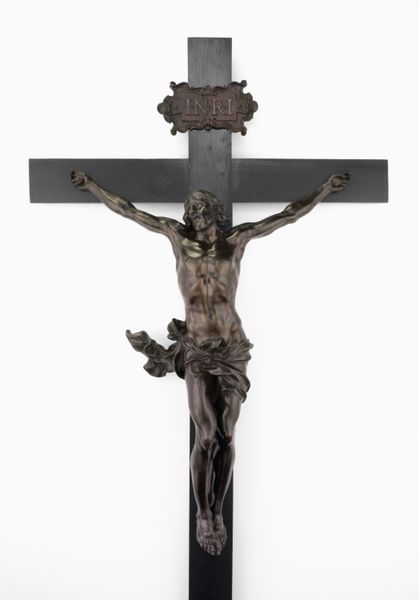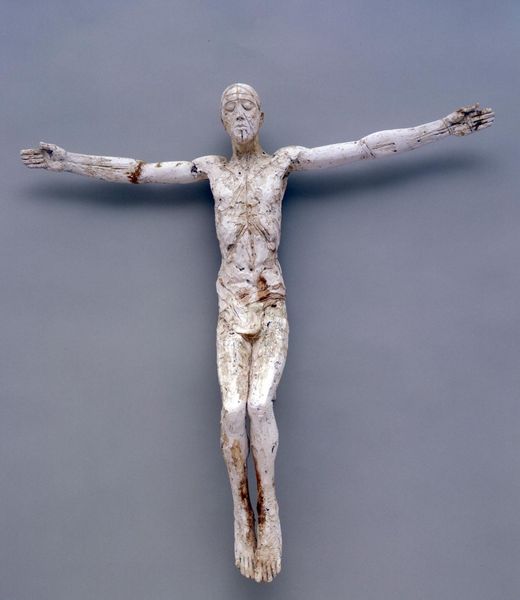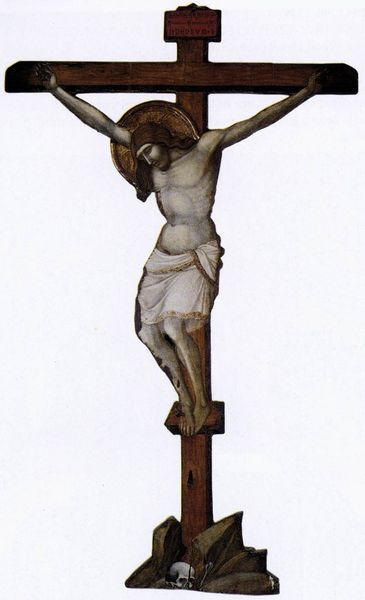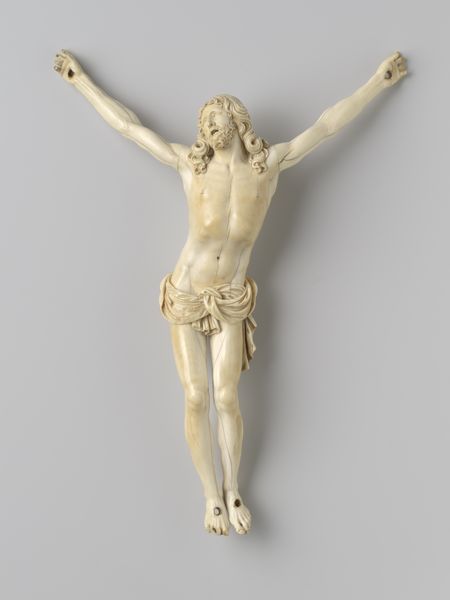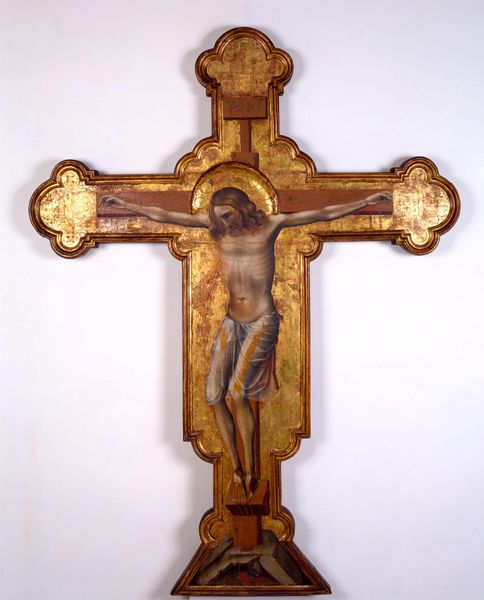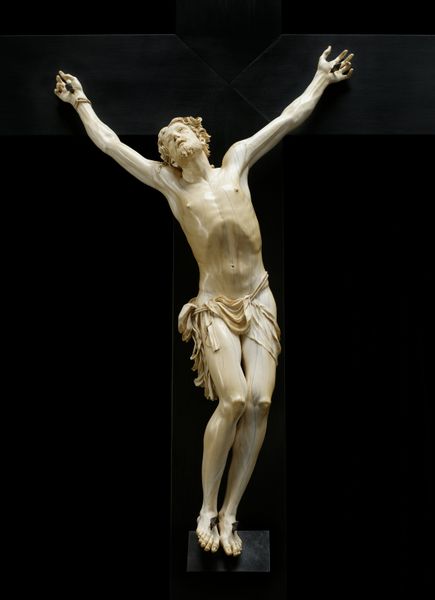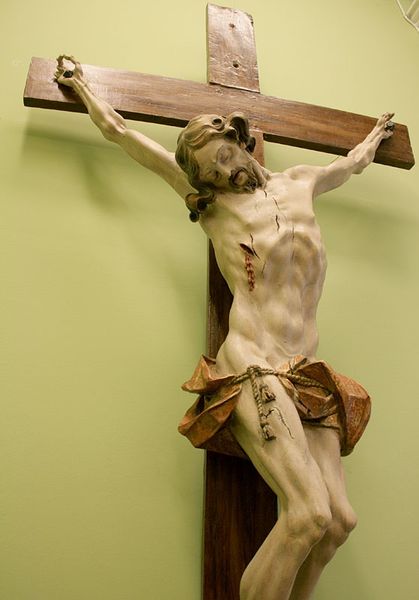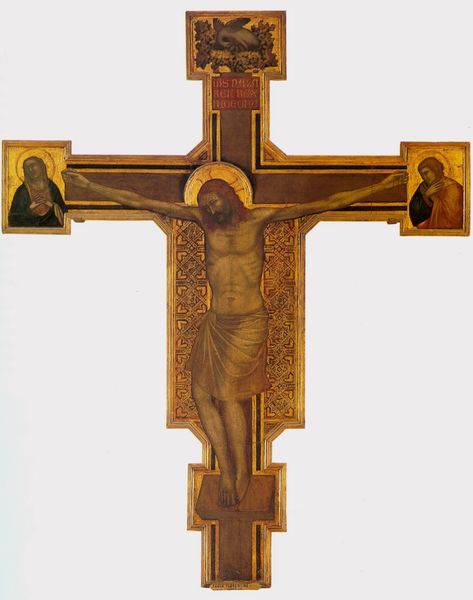
sculpture, ivory
#
medieval
#
figuration
#
sculpture
#
nude
#
ivory
Dimensions: 9 × 7 1/4 × 7/8 in. (22.86 × 18.42 × 2.22 cm)
Copyright: Public Domain
Editor: So here we have an ivory sculpture of the Crucifix, dating back to the 17th or 18th century. It’s housed here at the Minneapolis Institute of Art. I’m struck by the figure’s vulnerability, but also the exquisite detail, like the folds in the loincloth. What resonates with you when you look at this piece? Curator: What hits me first is this strange mix of power and fragility that only ivory can truly convey. You see, ivory has a warmth, almost a life force. Imagine the hand of the artist, perhaps laboring for years, slowly coaxing out this form, grain by grain, guided by faith, fueled by... well, who knows what? Perhaps a fever dream. Notice the tension, not just physical—the straining of muscles—but an emotional one as well, wouldn't you agree? Editor: Yes, the emotional weight is definitely palpable. Do you think the artist intended to focus on suffering or something else? Curator: Ah, the eternal question! Maybe it’s about acceptance? Think of it: absolute vulnerability, arms outstretched, not just in agony, but offering, accepting. Perhaps this artist was grappling with their own mortality, transforming fear into…well, a tangible, breath-taking beauty. Editor: That’s such an interesting point. It never occurred to me to see it as acceptance rather than just pure suffering. Curator: Isn’t that the magic of art, though? Shifting our perspectives, opening tiny doors in our minds? Ultimately, it is a reflection of us. Editor: Absolutely. This piece definitely gives us plenty to reflect on. Thanks for sharing your thoughts!
Comments
minneapolisinstituteofart almost 2 years ago
⋮
The province of Goa in western India was under Portuguese control from 1512–1961, forming a nexus in trading routes that circumnavigated the earth. Goan craftsman were renowned for their supple modeling of ivory (likely exported from Mozambique) into Christian icons, which feed the appetite for luxury products in Europe, as well as furthered evangelical missions throughout Asia and the Americas. Within the genre of Indo-Portuguese ivories, popular subjects include ‘Christ as the Good Shepard’ (the image of Christ as child would have related to similar bronze statuettes of the God Krishna) and the ‘Virgin of the Immaculate Conception,’ which shows Mary atop a crescent moon, both of which remain ever-present icons in South Asia’s diverse religious landscape.
Join the conversation
Join millions of artists and users on Artera today and experience the ultimate creative platform.



